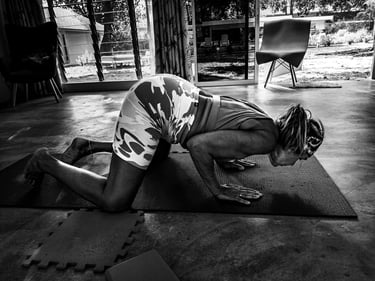Stretch Reflex & Guarding Reflex
What is Guarding Reflex?
If a particular movement has caused pain or injury in the past—or if the nervous system associates it with potential harm—both the stretch reflex and the guarding reflex can become more pronounced in anticipation of that movement.
The stretch reflex may trigger more readily because the nervous system anticipates a rapid stretch that could lead to re-injury. Conversely, the guarding reflex involves sustained muscle tension as a broader protective strategy. Together, these responses act as a protective mechanism against re-injury.
What is Stretch Reflex?
When you attempt a movement your muscles aren't accustomed to, an automatic response is triggered because the nervous system is uncertain about how far or how quickly the muscle can safely stretch. The reflex activates to prevent potential injury from this 'unknown' territory, even when the movement is ultimately safe. You can think of it as the body being cautious and conservative while exploring new movement possibilities.
It's like the body saying, 'I remember this; it hurt last time, so I'm going to tighten up to protect myself.'




In both scenarios, our reflexes work to safeguard our muscles, whether from the unknown risks of a new movement or from the known risks associated with a potentially harmful one.
In many cases of physical trauma (e.g. from an accident), both the stretch reflex and the guarding reflex can come into play to protect us, even after the initial injury has physically healed. Acknowledging that these protective reflexes can persist beyond the initial healing phase is key to addressing chronic pain and movement restrictions that sometimes follow physical trauma.
It highlights the importance of not just treating the physical injury, but also addressing the nervous system's learned responses and retraining it to recognise safe movement.
More Insights
